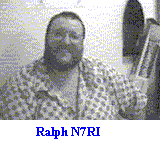 ...
...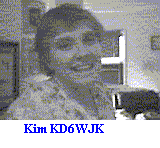
 ...
...
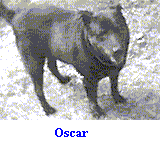 ...
...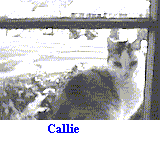
 ...
...
 ...
...
 ...
...
This first attempt at a totally homebrew project was inspired by the
Norcal
2N2222 building contest.
The circuits in this rig were patched together from the following sources:
FINAL AMPLIFIER
I used the Class A linear power amplifier for the WA7MLH dsb
transceiver, described on p. 202 of Hayward and DeMaw's SOLID
STATE DESIGN (1986), but simulating the 44C6 transistor with
8 paralleled 2n2222s. The WA7MLH amplifier is designed for a
standing current of 250 ma and an output of about 1 W PEP DSB.
With a 5 ohm collector resistor, this amp draws about 500 ma,
and has about 1 W PEP DSB output, as guesstimated from watching
the wiggle of a WM-2 needle while hollering 'Hola!' Greater
efficiency might be attained by using the recommended
1 ohm ballasting resistors in the emitter circuits of the
2n2222's, instead of the 10 ohm resistors found in my junkbox.
The output matching circuit is a controlled-Q L network with
values calculated using formulas from p. 53 of SOLID STATE
DESIGN. The low pass filter is a kit for 40 m from Hands
Electronics.
MIKE AMP
I used a 2n2222 mike preamp circuit from p. 60 of Rusgrove and
DeMaw's UNDERSTANDING AMATEUR RADIO (1977), and soldered an
electret mike element to the input.
BALANCED MODULATOR
This circuit comes from p. 202 of SOLID STATE DESIGN (the
WA7MLH dsb transceiver again). Unlike prior failed balanced
modulators, this was built on a separate circuit board from the
mike amp and the vfo. I measure less than 1 mW output from the
XCVR on transmit, with no audio input, using a WM-2 wattmeter on
the 100 mW scale.
RF AMPS
This circuit comes from DeMaw's W1FB QRP NOTEBOOK (Second
Edition). There, on p. 135,DeMaw daisy-chains four of these
broadband amplifiers to form an all-purpose rf amplifier.
To avoid overdriving the final amplifier, I measured output from
the final amp with first one, then two, and finally three of
these driver stages ahead of the final. A 10 mW crystal
oscillator output (as measured in a WM-2 wattmeter) was used as
input for the drivers. Extensive use of feedback, while
reducing output from each stage, helps ensure stability. The
broadband matching transformers used between stages in DeMaw's
original circuit have been omitted. One of these amps is also
used to amplify the vfo output for the receive mixer.
VFO/BUFFER
A 2n2222 VFO was built using the design for a Colpitts VFO given
\
on p. 34 of SOLID STATE DESIGN, together with the buffer stage
from p. 45 of the second edition of DeMaw's W1FB QRP NOTEBOOK
(Second Edition). It's plenty stable enough for casual phone
operation, even though I used silver-dipped mica caps instead of
polystyrene or NPO caps. Also, I'm running the VFO at too high a
voltage (about 11 V), with a seat-of-the-pants 12 V Zener
regulator circuit. I should have bought a 9.1 V Zener and
followed the Zener regulator design information given in SOLID
STATE DESIGN (p. 156). Instead, I slapped a 12 V Zener from
VFO collector to ground, put resistors in series with the
collector to drop my power supply's 14 V down closer to, but
still above, 12 V, until the Zener was no longer running hot to
the touch. I don't know how much regulating it does, but the
VFO works.
RCVR
For the receiver, I built a simple direct conversion circuit,
using the 2 - 2n2222 audio amplifier shown on p. 81 of Rusgrove
and DeMaw's UNDERSTANDING AMATEUR RADIO. The mixer amp
is shown in SOLID STATE DESIGN on p. 75. The simple preselector
circuit comes from DeMaw's design for a Universal Direct
Conversion Receiver, on p. 79 of the W1FB QRP NOTEBOOK (Second
Edition). The preselector often functions as an rf gain control,
detuning the input to prevent overload.
TX/RX SWITCHING
At the time this seminar was given, my satellite gear consisted
The seminar was well-received by students and by school administrators alike.
The seminar was successful enough that school administrators funded
Many sources were plundered for introductory material. Especially
The second homework assignment
The original Word documents are available for download in my ftp area
Two 12 V relays from RS handle switching antenna, power, and
VFO signal between receiver and transmitter. They are both
activated at the same time by the push-to-talk switch.
Teaching High School Students
about Amateur Satellite Communications
a three week seminar about satellites to high school juniors and
seniors. The seminar ran one hour each day, and took place in a
computer lab. This allowed students to run the
WinOrbit tracking freeware
in class. Additional computer lab time was scheduled to give students
time to do online research for their assignments and to prepare Power
Point presentations. (These were extra credit, but all students did it!)
Each week, one lab assignment and two homework assignments were made.
Hands-on activities included building a 10m inverted vee and a 2m dipole,
together with setting up the satellite station and observing a beacon during
transit.
of a portable multi-mode 2m rig and a Radio Shack HTX-100 10m rig.
I focused on LEO communications, using RS-13 as an example.
A glance at the sample homework assignments and lab activities shows that the
subject of ham satellite communications can provide students with concrete
applications of elementary trigonometry and physics. Administrators like this!
The kids liked using the WinOrbit
freeware to predict satellite transits, they
enjoyed the hands-on activities with wire and solder, and of course they loved
the opportunity to get outside and set up the satellite station and antennas.
a technology proposal to purchase AO-27 communications gear for the
1999 - 2000 school year. We'll be using the Kenwood THD7A dualbander
together with a portable dual band yagi. We'll also use the VC-1
visual communicator to receive SSTV transmissions from Mir and
other sources. In addition, GPS receivers will be acquired to permit
students to experiment with APRS.
useful was the
tutorial on Keplerian elements available on the
AMSAT website. Examples of the
materials used during the seminar
are included below:
here on qsl.net. Start your ftp program, open ftp.qsl.net and change directory
to pub/n7ri. See the readme file for details..
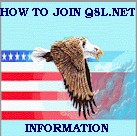 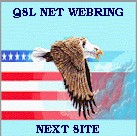
This QSL.NET WEBRING site is owned by Ralph Irons. Want to join the QSL.NET WEBRING? |
|---|
| [Skip Prev] [Prev] [Next] [Skip Next] [Random] [Next 5] [List Sites] |